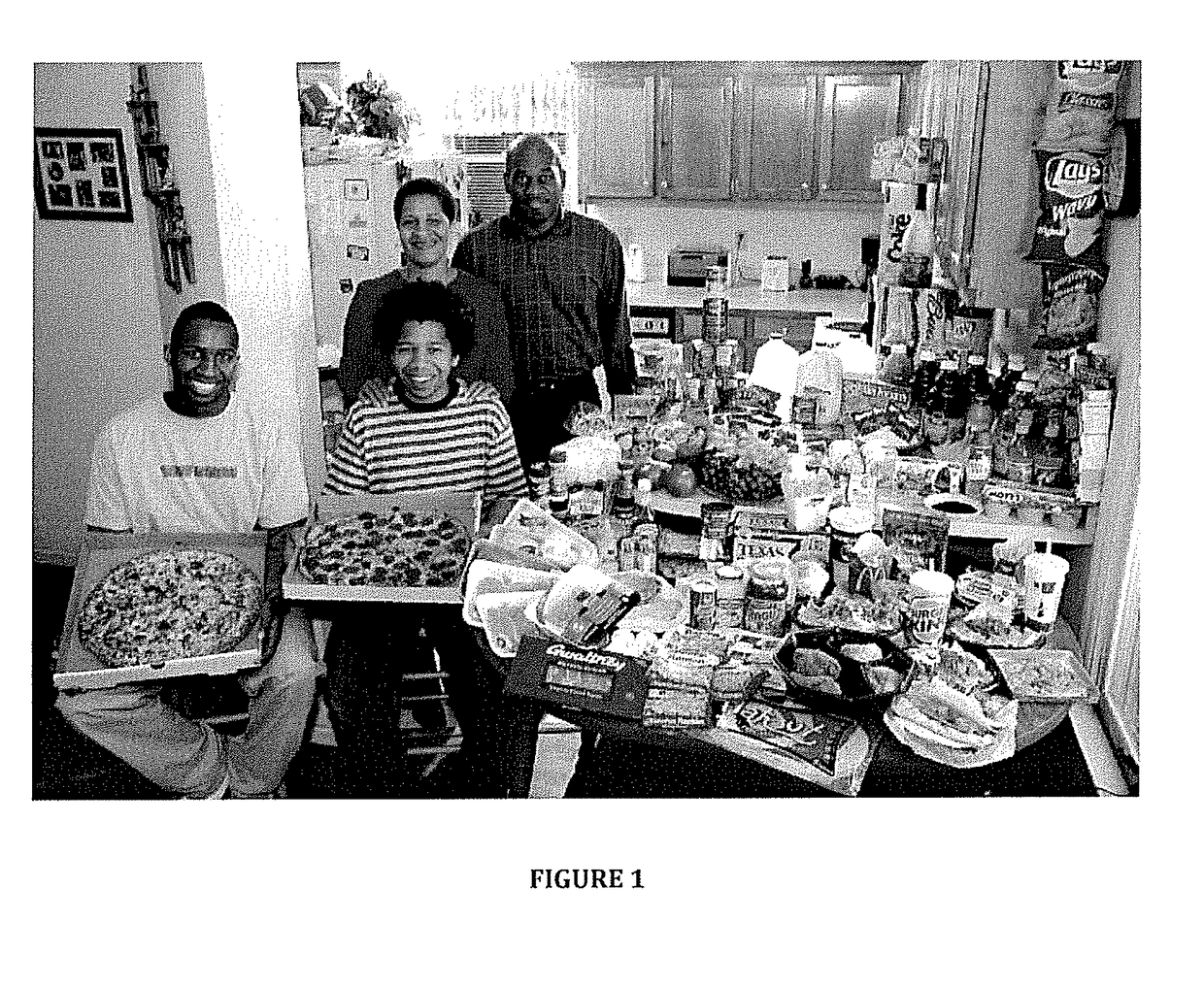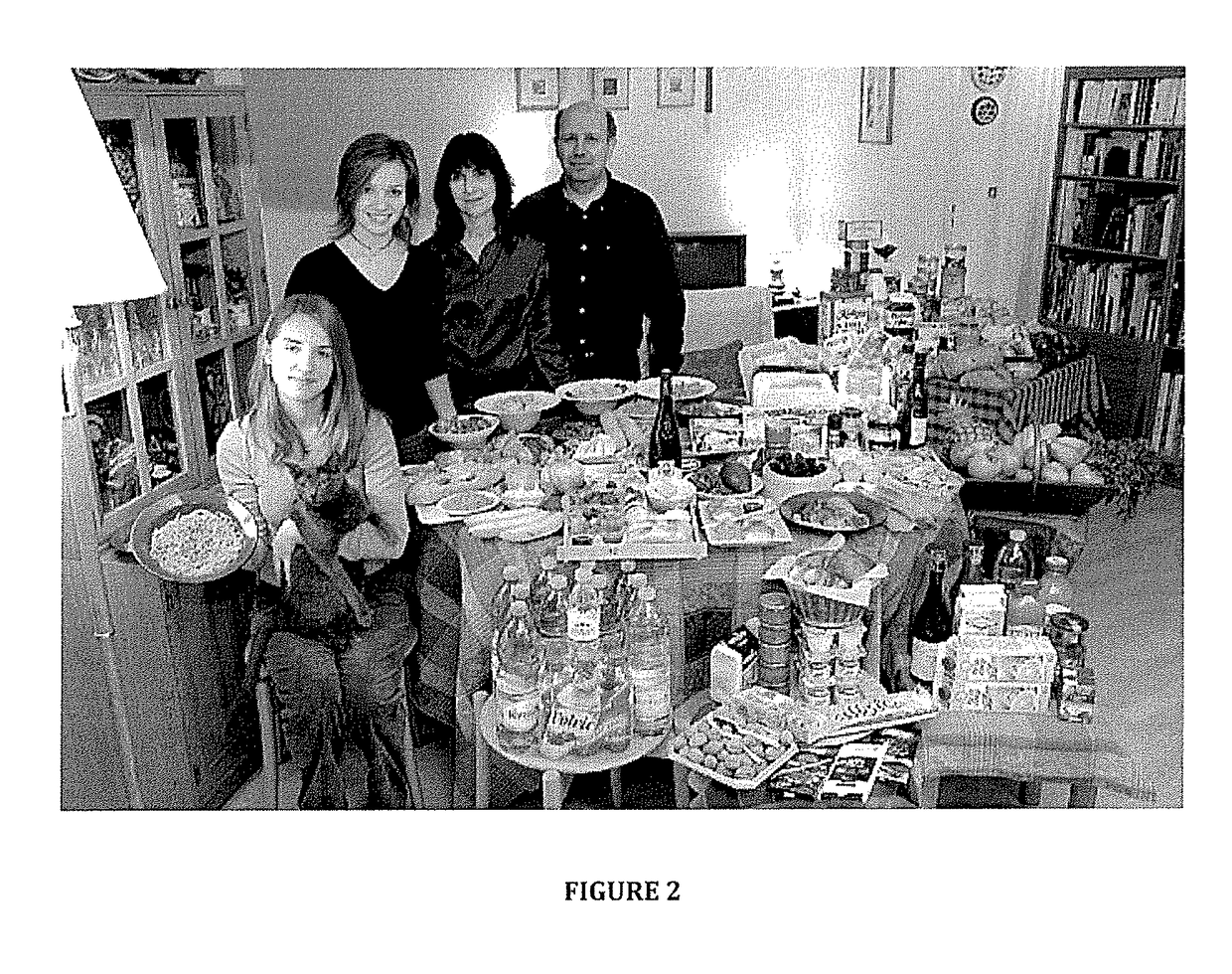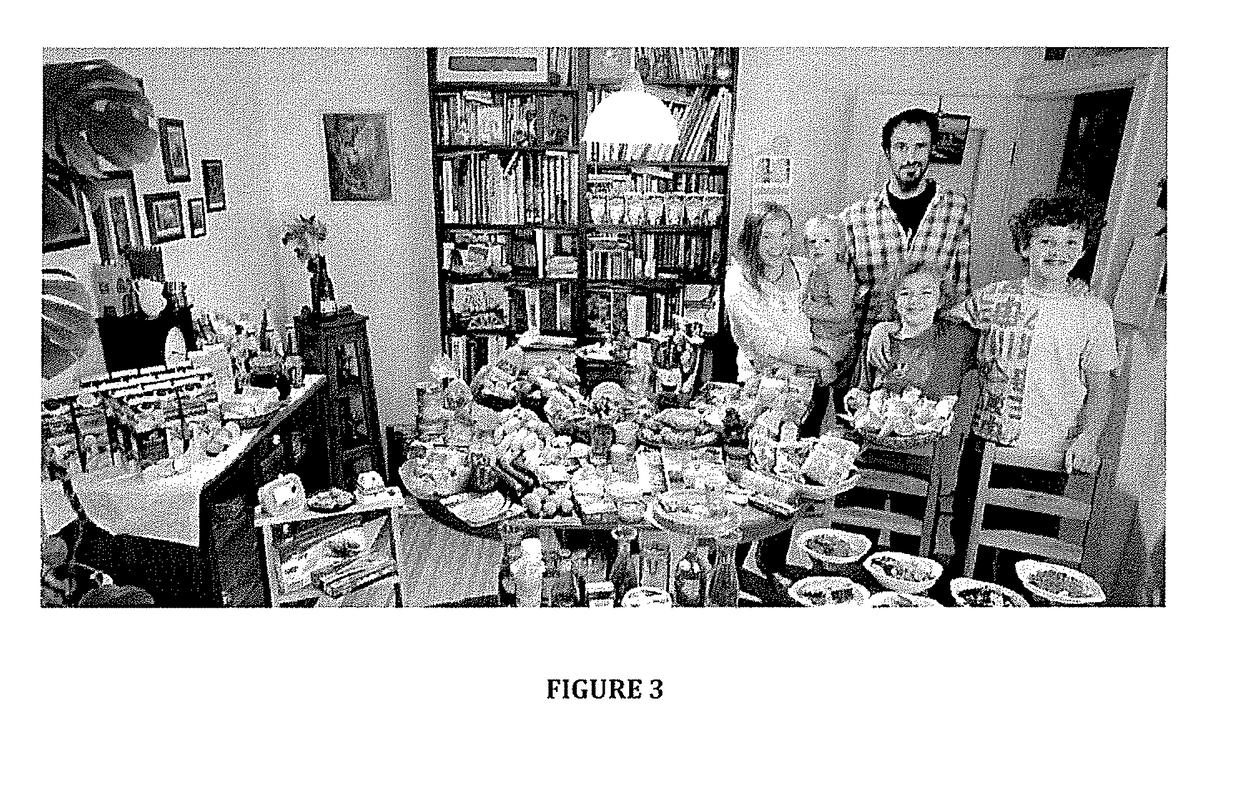Diet Quality Photo Navigation
a photo navigation and diet technology, applied in the field of diet quality photo navigation, can solve the problems of affecting the accuracy laborious for both the client and the consumer, and the inability to accurately represent the individual's dietary pattern, etc., and achieve the effect of accurate representation of the individual's habitual dietary pattern
- Summary
- Abstract
- Description
- Claims
- Application Information
AI Technical Summary
Benefits of technology
Problems solved by technology
Method used
Image
Examples
example 1
Populating the Matrix
[0170]1) A well-known, validated measure of diet quality is selected to establish an ordinal scale for the range of scores (e.g., quintiles)
[0171]2) Some number of dietary variants are defined, meaning a composition of routinely consumed foods and beverages, representative of each level of quality in the matrix. In other words, diets can vary in both character and quality. A variation in character would be the distinction between a vegetarian diet, and a Paleo diet. A variation in quality would be a high-quality vegetarian diet versus a low-quality vegetarian diet.
[0172]In order to provide any given user of the method with sufficient images to find a close match to their baseline and goal diets, these variations in both character and quality are represented by a suite of foods / drinks captured in a photograph. The ideal representation of, for instance, a “poor quality” vegetarian diet versus a “good quality” vegetarian diet is based on real-world reporting in die...
example 2
Closest Approximation of Baseline Diet
[0180]1) A subject is shown images from a photograph library and asked to choose the closest approximation of baseline diet for a period of time (i.e., one week); the images are VERY distinct. For example, the photograph library may include photographic representations of a ‘typical American diet,’ including meat, soda, and fast food; and an ‘optimal vegetarian diet’ showing no soda, no meat, no fast food, and in their place fresh vegetables, fruits, whole grains, a pitcher of water, etc.
[0181]2) Whichever image is chosen is then subjected to an EXPLODE function, in which N new food photographs, representing much more closely related variants of that dietary pattern are shown; and the subject is once again prompted to choose the closest approximation of baseline diet, in order to get an even closer fit. It is noted that N may be any number. In some embodiments, N is 2 or 3 or 4 or more. While there is no upper limit to N, too many photographs wo...
PUM
 Login to View More
Login to View More Abstract
Description
Claims
Application Information
 Login to View More
Login to View More - R&D
- Intellectual Property
- Life Sciences
- Materials
- Tech Scout
- Unparalleled Data Quality
- Higher Quality Content
- 60% Fewer Hallucinations
Browse by: Latest US Patents, China's latest patents, Technical Efficacy Thesaurus, Application Domain, Technology Topic, Popular Technical Reports.
© 2025 PatSnap. All rights reserved.Legal|Privacy policy|Modern Slavery Act Transparency Statement|Sitemap|About US| Contact US: help@patsnap.com



